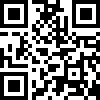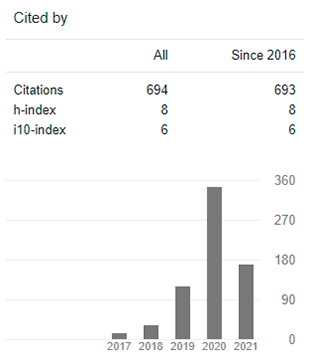The Interpersonal Communication Family and the Formative Cultural Process in the Venezuelan Elementary School. (Case: "Palenque Abajo" School, Buena Vista, Venezuela)
DOI:
https://doi.org/10.29394/scientific.issn.2542-2987.2017.0.0.9.154-173Keywords:
interpersonal communication, formative process, elementary schoolAbstract
The objetive of this researc is faced inside the social critical paradigm under the cualitative cultural corresponding to the participant action of investigation modality it has like propouse to investigate about the interpersonal communication and the formative process in the Venezuelan elementary school. This study was applicated to the students of the second fase of the “Palanque abajo” Bolivarian elementary school located in Buena vista. Iribarren district. Lara state. For making this investigation it accounted with the participation of the following social actors, two (02) students of second fase, like that two (02) representants and two (02) teachers who belong to this fase, in total six (06) actors. The investigation will make possible the propes fases of this study, they are (01) planification, (02) action, (03) observation, (04) reflection followed by the replanification in according with Teppa (2006). It will begin with the diagnostical fase witch will lot to discover and find up the study for putting togother the evidences it will use cualitative tecnies sueh as, participative observation, special and critical interviews and discussing groups, concluded that a good improves not only learning, meaning building and exchange also it contributes to the personality development of educational process students.
Downloads
References
Colas, E y Buendia, E. (1998). Método de investigación en psicopedagogía. McGraw-Hill Texto. Madrid.
De Bono, E. (1996). Lógica fluida. Buenos Aires: Editorial Paidós.
De La Torre (2000). Creatividad y formación. Identificación, Diseño y Evaluación. México: Trillas.
Gibson, J. (2007). Las organizaciones. España, Madrid: Irucon Editores.
González de Flores, G. y Hernández, G. (2000). Análisis e interpretación de la información en la investigación cualitativa. Barquisimeto: UPEL- IPB.
Interiano, C. (1999). Semiologia y comuniccion. Editorial Estudiantil Fenix. Guatemala.
Keith, Y. (2006). La comunicación como principal fuente de ideasen las personas. Colombia: Chokram.
Lomas, C. (1996). La comunicación en el aula. Revista Signos, Nº 13.
Martínez, Y. (2011). La comunicación asertiva, las relaciones interpersonales entre directivos y docentes de Educación Básica de la Unidad Educativa “Agua Viva”. Municipio Palavecino. Estado Lara. Trabajo de grado de maestría. UNY.
Reyes, M. (s.f.). Métodos y técnicas de investigación sociológica. México.
Satir, V. (1978). Relaciones humanas el núcleo familiar. California.
Teppa, S., y Arráez, M. (2005). Epistemología de la Investigación-acción participativa. Revista Educare, Vol. 9, Nº. 3.
Valle, M.S. (1997). Técnicas cualitativas de investigación social. Reflexión metodológica y práctica profesional. Madrid.
Veliz, X. (2011). Procesos utilizados por los directivos para el fomento del clima organizacional en la Unidad Educativa “Juan Manuel Álamo” del Municipio Crespo del estado Lara. Trabajo de Grado de Maestría no Publicado. Universidad Pedagógica Experimental Libertador.
Vygotsky. L (1979). El desarrollo de los procesos psicológicos superiores. Barcelona: Grijalbo.
Whetten, D. (2011). Desarrollo de habilidades directivas. México: Pearson Educación.
Downloads
Published
How to Cite
Issue
Section
License
The content of the journals of this site, are under a Creative Commons Attribution-Noncommercial-Share Alike 4.0 International License.













